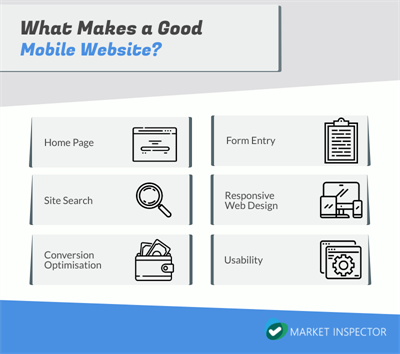Optimise Your Mobile Website Design with Top 31 Must-Follow Principles

Studies show that web traffic from mobile devices increased from 0.7% in 2009 to 70% in 2019. The average time spent by people on their mobile phones every day is 3 hours and 15 minutes. Taking both users’ expectations and Google’s demand for creators to adjust to mobile world into consideration, Market Inspector created an infographic that offers actionable tips on how to build optimised websites for mobile devices.
Making a mobile-friendly website can bring many benefits to business owners: improved user experience, increased traffic, faster website loading time, increased conversion rates, improved SEO, and decreased bounce rate.
The specific needs of mobile users
As more and more people access the internet on their phones, a well-optimised mobile website is crucial for users of small screens. Moreover, mobile users have specific needs: they expect to get what they want from the mobile-version of the website in an easy and convenient way. To deliver the best user experience, website owners need to focus on the following aspects: home page, site search, conversion, mobile form entry, responsive web design, and usability.
Deliver the best user experience
Simple design makes a website easy to navigate. This means making different user needs obtainable in the smoothest way possible. In particular, creating clear and easy user search experience is essential to increase engagement.
Allowing users to shop as a guest can increase the conversion rate, because guest-purchases do not require setting up an account, which naturally saves time. However, loyal customers may save time by creating an account and using quick-checkout in the future. Having both functionalities may increase your website design cost, but can benefit your business.
One of the most important principles of mobile web design is responsiveness, which makes a website look good on any screen size or kind of device. As users browse on an array of screen sizes, it is important that your site is responsive to this.
Moreover, using tappable instead of clickable elements, or allowing the users to finish tasks on other devices, are some of the most convenient solutions that make viewing a website on small screens more pleasant.
Finally, creators can improve users’ experience through device features such as calls, messages, opening apps directly from the browser, and the like.
To read Market Inspector’s comprehensive guide to the top 31 must-follow principles of mobile website design, you can see the infographic here.
Contact information
Patrycja Hala Saçan
Communications Assistant at Market Inspector
Email: phs@market-inspector.co.uk
Phone: 020 3608 0133
Market-Inspector is a B2B digital marketplace for businesses and institutions in Europe, that offers them the opportunity to compare quotes and offers from quality suppliers. We deliver a quick, efficient and unique service on a wide range of products, which enables businesses to make more informed decisions. We believe business should run smoothly and we are here to help make sure that happens. That is why we strive to provide your business with only the best, most reliable business to business suppliers.


